کاوا کاوا که به نام فلفل استرالیایی مشهور است یکی از بهترین مواد شادی اور و انرژی زا در دنیا است .زادگاه اصلی کاوا جزایر اقیانوس آرام،است .
بومیان استرالیا و جزایر اقیانوس ارام هزاران سال است که از این گیاه استفاده می کردند.
اولین دانش و آگاهی غرب از این گیاه به یکی از سفرهای دریایی کاپیتان جیمز کوک بر می گردد که در دهه های 1700 صورت گرفت.
بومیان این جزایر از این گیاه به عنوان بخشی از آداب و رسوم قبیلگی خود استفاده می کردند به طوری که گیاه مزبورمورد توجه بسیاری از گردهماییهای اجتماعی محسوب شده است.نوشیدنی تهیه شده از ریشه های کاوا سبب کرخ شدن دهان میشود.
ماده مخدر در این گیاه ترکیبات پپریدین است .
این گیاه در درمان اضطرابات بسیار موثر است .و خوردن نوشیدنی محتوی کاوا باعث افزایش نیروی بدنی و جنسی و رفع افسردگی و شادی می شود .
در قرن بیستم گیاه مزبور به بسیاری از بازدید کنندگان جزایر اقیانوس آرام نیز داده شد. هیلاری ردام کلینتون و پاپ ژان پل دوم نیز در مراسم و ضیافتهای رسمی و خوشامدگویی همانند جانسون رئیس جمهور آمریکا و همسرش خانم لیندون بی جانسون در سال 1966 طعم این گیاه را چشیدند.
ریشة این گیاه می تواند نگرانی متأثر از فشار روحی و همچنین اثرات اختلالات ناشی از نگرانی را کمتر کند. مصرف این گیاه در حد پایین سبب نشاط و بیداری میشود، و در حد مصرفی بالا، مواد شیمیایی موجود در ریشه سبب خواب آلودگی میشود.
کاوا مادة مسکن خفیف است (برخلاف الکل و داروهای ضد اضطراب). پزشکان معالج آنرا برای درمان درد و سفتی عضلات بدن، نگرانی، کم خوابی، نگرانی ناشی از یائسگی، صرع کنترل نشده، و درد تجویز می کنند. امروزه انواع مختلف ان به صورت قرص کپسول و پودر و نوشابه موجود است
Kava is consumed in various ways throughout the Pacific Ocean cultures of Polynesia, Vanuatu, Melanesia and some parts of Micronesia and Australia. Traditionally it is prepared by either chewing, grinding or pounding the roots of the kava plant. Grinding is done by hand against a cone-shaped block of dead coral; the hand forms a mortar and the coral a pestle. The ground root/bark is combined with only a little water, as the fresh root releases moisture during grinding. Pounding is done in a large stone with a small log. The product is then added to cold water and consumed as quickly as possible.
The extract is an emulsion of kavalactone droplets in starch. The taste is slightly pungent, while the distinctive aroma depends on whether it was prepared from dry or fresh plant, and on the variety. The colour is grey to tan to opaque greenish.
Kava prepared as described above is much more potent than processed kava. Chewing produces the strongest effect because it produces the finest particles. Fresh, undried kava produces a stronger beverage than dry kava. The strength also depends on the species and techniques of cultivation. Many find mixing powdered kava with hot water makes the drink stronger. However the active ingredients of kava, such as Kavalactone, are ruined at 140 °F (60 °C).[citation needed] Most tea steeps at 180 °F (82 °C) for at least a couple of minutes which will reduce the potency of the kava.
In Vanuatu, a strong kava drink is normally followed by a hot meal or tea. The meal traditionally follows some time after the drink so that the psychoactives are absorbed into the bloodstream quicker. Traditionally no flavoring is added.
In Papua New Guinea, the locals in Madang province refer to their kava as "waild koniak" ("wild cognac" in English).
Fijians commonly share a drink called grog made by pounding sun-dried kava root into a fine powder, straining and mixing it with cold water. Traditionally, grog is drunk from the shorn half-shell of a coconut, called a bilo. Grog is very popular in Fiji, especially among young men, and often brings people together for storytelling and socializing. Drinking grog for a few hours brings a numbing and relaxing effect to the drinker, grog also numbs the tongue and it is typical that grog drinking be followed by a "chaser" or sweet or spicy snack to follow a bilo
The extract is an emulsion of kavalactone droplets in starch. The taste is slightly pungent, while the distinctive aroma depends on whether it was prepared from dry or fresh plant, and on the variety. The colour is grey to tan to opaque greenish.
Kava prepared as described above is much more potent than processed kava. Chewing produces the strongest effect because it produces the finest particles. Fresh, undried kava produces a stronger beverage than dry kava. The strength also depends on the species and techniques of cultivation. Many find mixing powdered kava with hot water makes the drink stronger. However the active ingredients of kava, such as Kavalactone, are ruined at 140 °F (60 °C).[citation needed] Most tea steeps at 180 °F (82 °C) for at least a couple of minutes which will reduce the potency of the kava.
In Vanuatu, a strong kava drink is normally followed by a hot meal or tea. The meal traditionally follows some time after the drink so that the psychoactives are absorbed into the bloodstream quicker. Traditionally no flavoring is added.
In Papua New Guinea, the locals in Madang province refer to their kava as "waild koniak" ("wild cognac" in English).
Fijians commonly share a drink called grog made by pounding sun-dried kava root into a fine powder, straining and mixing it with cold water. Traditionally, grog is drunk from the shorn half-shell of a coconut, called a bilo. Grog is very popular in Fiji, especially among young men, and often brings people together for storytelling and socializing. Drinking grog for a few hours brings a numbing and relaxing effect to the drinker, grog also numbs the tongue and it is typical that grog drinking be followed by a "chaser" or sweet or spicy snack to follow a bilo
The roots of the plant are used to produce a drink with sedative and anesthetic properties. Kava is consumed throughout the Pacific Ocean cultures of Polynesia (including Hawaii), Vanuatu, Melanesia and some parts of Micronesia. Kava is sedating and is primarily consumed to relax without disrupting mental clarity. Its active ingredients are called kavalactones. A Cochrane Collaboration systematic review of its evidence concluded that it was likely to be more effective than placebo at treating short-term social anxiety. Safety concerns have been raised over liver toxicity largely due to the use of stems and leaves by supplement makers, as opposed to solely the root of the plant as dictated by traditional uses. However, based on a retrospective study of retained Piper methysticum drug materials in Germany, the alkaloid pipermethystine, occurring to about 0.2% in the leaves, is an unlikely cause for the observed hepatotoxicity. Whether kava hepatotoxicity may be due to contamination with aflatoxicosis or other mould hepatotoxins, requires further studies Heavy use of kava with comorbid alcohol consumption or an existing liver condition appears to lead to malnutrition, weight loss, liver damage (causing elevated serum γ -glutamyl transferase and high-density lipoprotein cholesterol levels), renal dysfunction, rashes, pulmonary hypertension, macrocytosis of red cells, lymphocytopenia, and decreasing platelet volumes
BOTANICAL CLASSIFICATION
Family :
Piperaceae
Genus :
Piper
Species :
methysticum
COMMON NAMES
Kava; Kawa; Awa; Waka; Lawena; Sakau; Yaqona
EFFECTS CLASSIFICATION
Depressant; Intoxicant
DESCRIPTION
Kava is a tropical evergreen shrub with large heart-shaped leaves and woody stems. Its thick roots are mashed or ground and made into a cold beverage used similarly to alcohol. It has a long history of ritual and recreational use in Pacific Polynesia and is now a common herbal product.
Anthropological evidence suggests that Kava has been cultivated and consumed by humans for well over 3000 years . It is still used today by a wide range of Pacific societies for spiritual, medicinal, and recreational purposes. Kava is deeply integrated into the culture of these societies and and its use is surrounded with ritual when Kava is used for any purpose. The giving and receiving of the root is often involved in life passages such as weddings and funerals. As it is with many other psychoactive plants, the consumption of Kava is associated with the spirit world and is used to contact ancestors and for divination. The feelings of camaraderie that Kava drinking evokes have made it a symbol for peace and friendship in many island nations of the Pacific.
Kava, piper methysticum, is a hardy perennial belonging to the pepper family, piperaceae. Cultivated throughout the South Pacific and as far north to Hawaii, it thrives in tropical to sub-tropical climates. The plant, which is a stocky, non-climbing shrub is quite ornate having smooth thick stalks with heart shaped leaves. Kava has been cultivated for such a long time by humans it no longer produces viable seed and must be propagated vegetatively by cuttings. Its active principals, Kavalactones, are concentrated in its roots
معرفي گياه
ريشه كاوا از گياه بلندي تأمين ميشود كه در جزاير اقيانوس آرام از جمله هواوايي رشد و نمو مي كند. گياه مزبور برگهاي بزرگ. سبز و قلبي شكل توليد مي كند كه به صورت انبوه در شاخه ها و به دور از ساقه هاي ضخيم گياه رشد
مي كنند. گل هاي بلند و نازك اين گياه به جوانة ذرت چيني شباهت دارد كه شاخه هاي آن به ساقه ها چسبيده اند. ريشه هاي اين گياه به بوته هايي با شاخه هاي پر شاخ و برگ و كركدار شباهت دارند.
تركيبات گياه
ريشه كاوا حاوي مواد شيميايي به نام "كاوا پايرون" است كه سبب كاهش تشنج و در آزمايشگاههاي تحقيقاتي در حيوانات سبب استراحت و آرامش عضلات ميشود. كاوا لاكتونها همچنين واكنشهاي مغزي را (كه تصور ميشود شبيه آن دسته از واكنشهاي ناشي از داروهاي تجويزي مورد مصرف در درمان افسردگي و نگراني باشند)، تقليل مي دهد. كاوا لاكتونها در صورت مصرف كاوا از طريق دهان يا لثه ها سبب كرخ شدن و بي حس شدن زبان مي گردد.
اشكال موجود
در برخي از فرهنگها كاوا از طريق جويدن ريشه و ريختن آن داخل كاسه تهيه ميشود. بزاق دهان با ريشة آن مخلوط ميشود و خاصيت درماني اين گياه را فعال مي كند. امروزه، سازندگان از الكل يا در عوض از استات استفاده مي كنند. كاوا در اشكال مختلفي نظير حالت مايع در قالب انواع عصاره ها و در قالب انواع كپسول يا قرص مي توان به دست آورد. همچنين به صورت پودر يا خرد شده موجود است.
نحوه مصرف
اگر پزشك معالج شما مصرف كاوا را تجويز كرده باشد، حتماً به منظور دستيابي به فرآورده هاي كاواي استاندارد حاوي 70 درصد كاوا لاكتون برچسب آنرا قبل از مصرف بخوانيد. فرآورده استاندارد آن نوع فراروده اي است كه ميزان مشخص مواد گياهي فعال در هر دوز مصرفي در آن قيد شده باشد. براي درمان نگراني و كم خوابي و كاهش فشار روحي ميزان تجويزي كاوا عبارت است از 2-4 گرم دم كرده آن (فرآورده اي كه از طريق جوشاندن گياه در آب تهيه ميشود) روزي سه بار.
روزانه 60 تا 600 ميلي گرم كاوا لاكون استاندارد مصرف كنيد يا از دستورهاي پزشك معالج خود پيروي كنيد. طول دورة درمان با كاوا نيز متفاوت است. مشاهده هر نوع بهبود ممكن است چهار هفته طول بكشد. تصويه نميشود به مدت بيش از سه ماه كاوا مصرف گردد.
نكات احتياطي
عوارض جانبي كاوا جزئي است. اين گياه طبي سبب كرخ شدن دهان شما ميشود و ممكن است مزة بدي هم داشته باشد. در درصد كمي از افرادي كه كاوا مصرف كرده بودند تهوع، سردرد، سرگيجه يا جوش صورت گزارش شده است.در صورت مواجهه با هر كدام از اين حالات، با پزشك معالج خود مشورت كنيد. از رانندگي به هنگام مصرف كاوا اجتناب كنيد.
انجمن فرآورده هاي گياهان دارويي آمريكا زنان باردار و شيرده را از مصرف كاوا كاوا منع
مي كند. انجمن مزبور در خصوص مصرف بيش از دوز توصيه شده نيز هشدار مي دهد و مصرف اين گياه دارويي را به مدت بيش از سه ماه و رانندگي به هنگام مصرف آن را منع مي كند.
ميسيونرهاي اعزامي به جزاير اقيانوس آرام در طول قرن نوزدهم پي بردند كه افرادي كه هميشه كاوا مصرف كرده اند داراي پوست بدن مايل به زرد و زبر هستند. تحقيقات اخير نيز نشان داده است كه افرادي كه به ميزان 100 برابر معمول كاوا مصرف مي كنند همان حالت زردي پوست، جوش صورت، ريزش مو و اختلال در قوه بينايي، اشتها و تنفس به آنها دست مي دهد. اينگونه تغييرات پس از قطع مصرف كاوا به حالت عادي بر مي گردند.
تداخل هاي احتمالي
در صورت مصرف باربيتورات يا به هنگام مصرف الكل از مصرف كاوا بپرهيزيد. كاوا ممكن است اثر اين داروها را از بين ببرد
ريشه كاوا از گياه بلندي تأمين ميشود كه در جزاير اقيانوس آرام از جمله هواوايي رشد و نمو مي كند. گياه مزبور برگهاي بزرگ. سبز و قلبي شكل توليد مي كند كه به صورت انبوه در شاخه ها و به دور از ساقه هاي ضخيم گياه رشد
مي كنند. گل هاي بلند و نازك اين گياه به جوانة ذرت چيني شباهت دارد كه شاخه هاي آن به ساقه ها چسبيده اند. ريشه هاي اين گياه به بوته هايي با شاخه هاي پر شاخ و برگ و كركدار شباهت دارند.
تركيبات گياه
ريشه كاوا حاوي مواد شيميايي به نام "كاوا پايرون" است كه سبب كاهش تشنج و در آزمايشگاههاي تحقيقاتي در حيوانات سبب استراحت و آرامش عضلات ميشود. كاوا لاكتونها همچنين واكنشهاي مغزي را (كه تصور ميشود شبيه آن دسته از واكنشهاي ناشي از داروهاي تجويزي مورد مصرف در درمان افسردگي و نگراني باشند)، تقليل مي دهد. كاوا لاكتونها در صورت مصرف كاوا از طريق دهان يا لثه ها سبب كرخ شدن و بي حس شدن زبان مي گردد.
اشكال موجود
در برخي از فرهنگها كاوا از طريق جويدن ريشه و ريختن آن داخل كاسه تهيه ميشود. بزاق دهان با ريشة آن مخلوط ميشود و خاصيت درماني اين گياه را فعال مي كند. امروزه، سازندگان از الكل يا در عوض از استات استفاده مي كنند. كاوا در اشكال مختلفي نظير حالت مايع در قالب انواع عصاره ها و در قالب انواع كپسول يا قرص مي توان به دست آورد. همچنين به صورت پودر يا خرد شده موجود است.
نحوه مصرف
اگر پزشك معالج شما مصرف كاوا را تجويز كرده باشد، حتماً به منظور دستيابي به فرآورده هاي كاواي استاندارد حاوي 70 درصد كاوا لاكتون برچسب آنرا قبل از مصرف بخوانيد. فرآورده استاندارد آن نوع فراروده اي است كه ميزان مشخص مواد گياهي فعال در هر دوز مصرفي در آن قيد شده باشد. براي درمان نگراني و كم خوابي و كاهش فشار روحي ميزان تجويزي كاوا عبارت است از 2-4 گرم دم كرده آن (فرآورده اي كه از طريق جوشاندن گياه در آب تهيه ميشود) روزي سه بار.
روزانه 60 تا 600 ميلي گرم كاوا لاكون استاندارد مصرف كنيد يا از دستورهاي پزشك معالج خود پيروي كنيد. طول دورة درمان با كاوا نيز متفاوت است. مشاهده هر نوع بهبود ممكن است چهار هفته طول بكشد. تصويه نميشود به مدت بيش از سه ماه كاوا مصرف گردد.
نكات احتياطي
عوارض جانبي كاوا جزئي است. اين گياه طبي سبب كرخ شدن دهان شما ميشود و ممكن است مزة بدي هم داشته باشد. در درصد كمي از افرادي كه كاوا مصرف كرده بودند تهوع، سردرد، سرگيجه يا جوش صورت گزارش شده است.در صورت مواجهه با هر كدام از اين حالات، با پزشك معالج خود مشورت كنيد. از رانندگي به هنگام مصرف كاوا اجتناب كنيد.
انجمن فرآورده هاي گياهان دارويي آمريكا زنان باردار و شيرده را از مصرف كاوا كاوا منع
مي كند. انجمن مزبور در خصوص مصرف بيش از دوز توصيه شده نيز هشدار مي دهد و مصرف اين گياه دارويي را به مدت بيش از سه ماه و رانندگي به هنگام مصرف آن را منع مي كند.
ميسيونرهاي اعزامي به جزاير اقيانوس آرام در طول قرن نوزدهم پي بردند كه افرادي كه هميشه كاوا مصرف كرده اند داراي پوست بدن مايل به زرد و زبر هستند. تحقيقات اخير نيز نشان داده است كه افرادي كه به ميزان 100 برابر معمول كاوا مصرف مي كنند همان حالت زردي پوست، جوش صورت، ريزش مو و اختلال در قوه بينايي، اشتها و تنفس به آنها دست مي دهد. اينگونه تغييرات پس از قطع مصرف كاوا به حالت عادي بر مي گردند.
تداخل هاي احتمالي
در صورت مصرف باربيتورات يا به هنگام مصرف الكل از مصرف كاوا بپرهيزيد. كاوا ممكن است اثر اين داروها را از بين ببرد
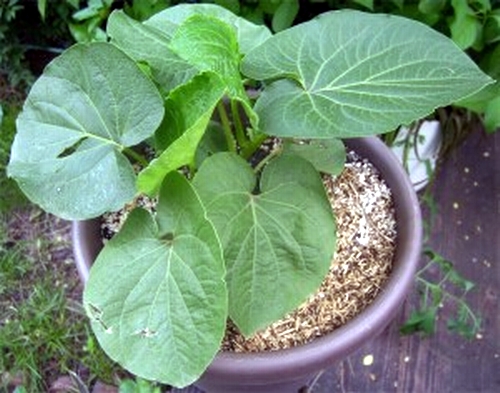
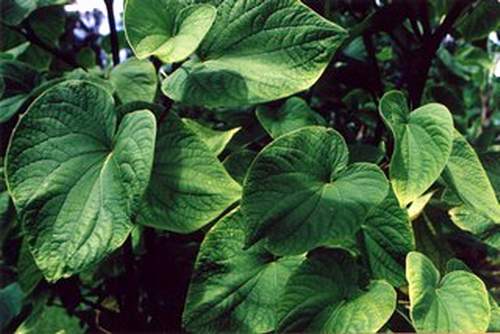
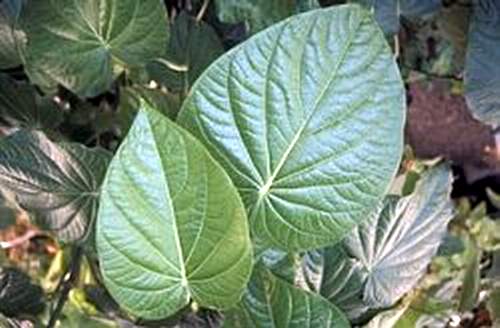

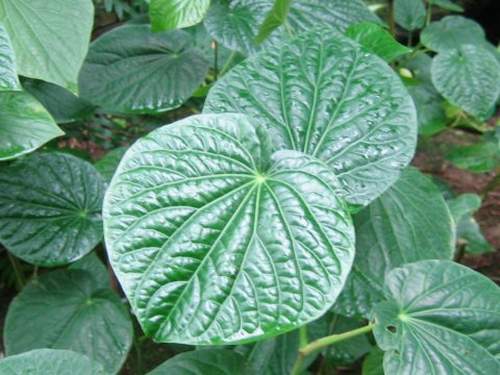
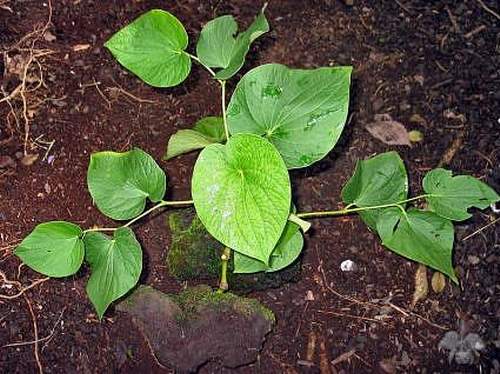
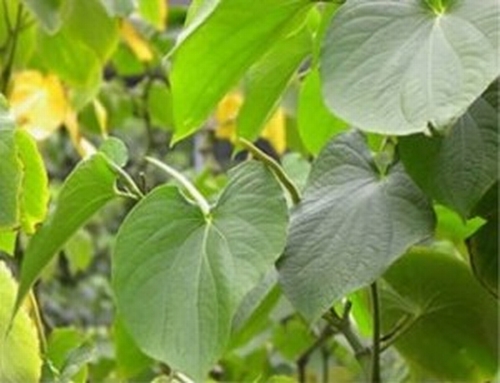
10 comments:
CATHA EDULIS or Celastrus edulis
ghashange
chera sitet filtere chize badi ke nadare
peganum harmala asfand
Ayahuasca shaman flower
salam, merci az blog khoby ke dary. kheli be darde man mikhore. rasti bebakhshid an ye soal dashtam misheh yek email be man bedy ke beporsam azat? mamnon misham
Crow.Rahgozar.gmail.com hala chera inja nanevashti
List of Botanicals Covered:
Miracle Fruit - Synsepalum dulcificum
Chacruna - Psychotria Viridis
Opium Poppy - Papaver Somniferum
St. John Wort
Kava - Piper methysticum
Kanna - Sceletium tortuosum
Kratom - Mitragyna speciosa
Sensative Plant - Mimosa pudica
Wild Dagga - Leonotis leonurus
Yellow Horned Poppy - Glaucium Flavum
Salvia divinorum
Wormwood - Artemisia absinthium
Areca Nut
Dream Herb - Calea zacatechichi
Khat - Catha edulis
San Pedro cactus - Trichocereus pachanoi
Hawaiian Baby Woodrose - Argyreia nervosa
Jimson Weed - Datura Inoxia and Datura Stramonium
Chamomile
Sassafrass
Morning Glory - Ipomoea purpurea
Velvet Bean - Mucuna pruriens
Gladiolus watermeyeri
Hops - Humulus lupulus
Camphor Laurel - Cinnamomum camphora
Venus Flytrap
Calamus Root - Acorus Calamus
Persian Shield - Strobilanthes Dyerianus
Mandrake - Mandragora officinarum
Bleeding Heart - Dicentra spectabilis
Pitcher plant
Nutmeg - Myristica fragrans
Lady Slipper orchid - Cypripedioideae and/or paphiopedlium
Horse Tails - Equisetaceae
Ginger - Zingiber officinale
Phalaris Grass
Guarana
Purple Velvet Plant - Gynura aurantiaca
Yerba Mate
Betel Nut
Cacao Tree - Theobroma cacao
Stephania Japonica
Henbane - Hyoscyamus Niger
Titan Arum - Amorphophallus titanum
Corpse Flower - Rafflesia arnoldii
Welwitschia Mirabilis
Blue Agave - Agave tequilana
Cinnamon - Cinnamonum zeylanicum
Dragon Tree - Dracaena draco
Resurrection Plant - Selaginella lepidophylla
Tea - Camellia sinensis
Tobacco - Nicotiana Rustica
Dracunculus vulgaris
Blue Dawn Flower - IPOMOEA acuminata
Euphorbia obesa
Yellow Anise - Illicium paviflorum
Sunflower
Lily of the Valley
Passion Fruit
Hydrona africana
Wollemi Pine - Wollemia nobilis
Watermeal - Wolffia
Ghost Plant - Monotropa uniflora
Purple Iris
Cow's Udder - Solanum mammosum
Sundew - Drosera
Clover - Trifolium
Caster Oil Plant - Ricinus communis
Deadly Nightshade - Atropa belladonna
Poison Ivy
Honeysuckle - Lonicera
Stinging Nettle
Sweet Basil - Ocimum basilicum
Pituri Bush - Duboisia hopwoodii
Muscadine - Vitis rotundifolia
Monkshood - Acontium
Mullein - Verbascum thapsus
Brazil Nut
Bat Flower
Wasabi - Wasabia Japonica
Strangler Fig
salam
man salvia divinorum mikham khodam gras masraf mikonam vali ino natonestam peyda konam shoma baraye forosh darid?
age nadarid az koja mitonam peyda konam?
mamnon
سلام
جناب رهگذر جهت امر مهمی باید با شما تماس بگیرم ایا می توانید تلفن شما را داشته باشم با تشکر دکتر یزدان نیاز
ای میل من yazdanniaz@gmail.com
سلام . ممنون از مطالب جالبت . جالبه انتخاب های جالبی هم داری خیلی به درد من میخوره.
سلام . ممنون از مطالب جالبت . جالبه انتخاب های جالبی هم داری خیلی به درد من میخوره.
Post a Comment